I was delighted to learn that you are permitted to take all the pictures you want in the museum as long as you don't use a tripod or flash; surprisingly a lot of my photos actually came out OK!
Our first stop was Pit #1,

where the original peasants dug the original well that led to the original discovery of these clay soldiers. When you think about it, what a blessing they didn't find this site until 1974 - if it had been found during or before the Cultural Revolution, it would probably have been destroyed.
The pit is huge, and when you walk in from the East,
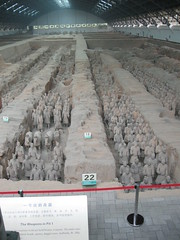
the warriors are all sort of charging at you. Almost all the original statues were smashed to bits by the troops who overthrew the Qin dynasty three or four years after the first emperor's death, but the front of the display pit is filled with the ones they have repaired so far. This is more like what it looked like at the beginning:
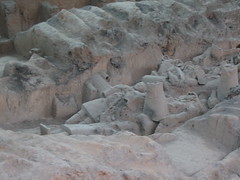
It is dim and rather dusty in this huge hanger. I kind of like the way there are no glamorous displays, nothing at all flashy in here. It's just you and thousands of terra-cotta soldiers who are over 2000 years old. You confront each other, and I got a sense of the age of this place. It's hard to describe, but it's amazing and impressive.
We walked along the right hand side, examining the soldiers closest to us. It's easy to see that most of the soldiers were pikemen or spear carriers
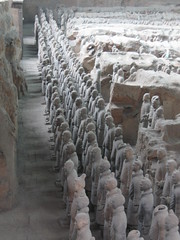
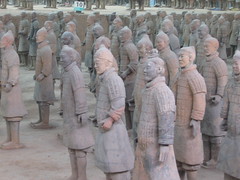
by the position of their hands. There is also a substantial number of charioteers with their horses:
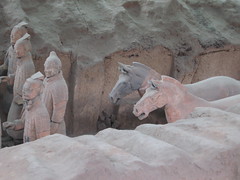
The soldiers here appear to have been holding lead ropes of some kind, and this one:
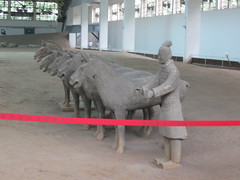
must have been holding reins. I love the horses! Their forelocks curl cutely to each side and their mouths are open to accommodate the bridles and bits that they were originally wearing.
A little farther back in the pit - you can walk all the way around it - is an area where the archaeologists are jigsaw-puzzling the next batch of warriors together. They called it the "hospital" area.
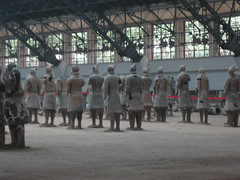
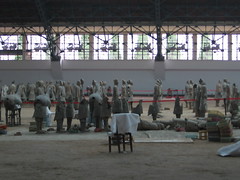
You can see that a lot of the fill dirt is still in place, too:
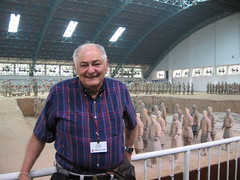
Look behind Dad and you'll see that some warriors are in a dug-out part and others are standing six feet higher on an un-excavated portion. Around the far side of the pit it was even easier to see:
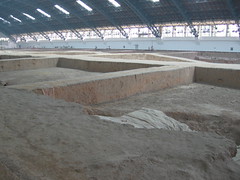
so there may be many more discoveries to make!
We worked our way back to where we started
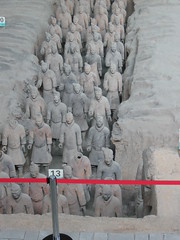
and emerged into the daylight (not that big of a change, since it's overcast with occasional spits of rain).

No comments:
Post a Comment